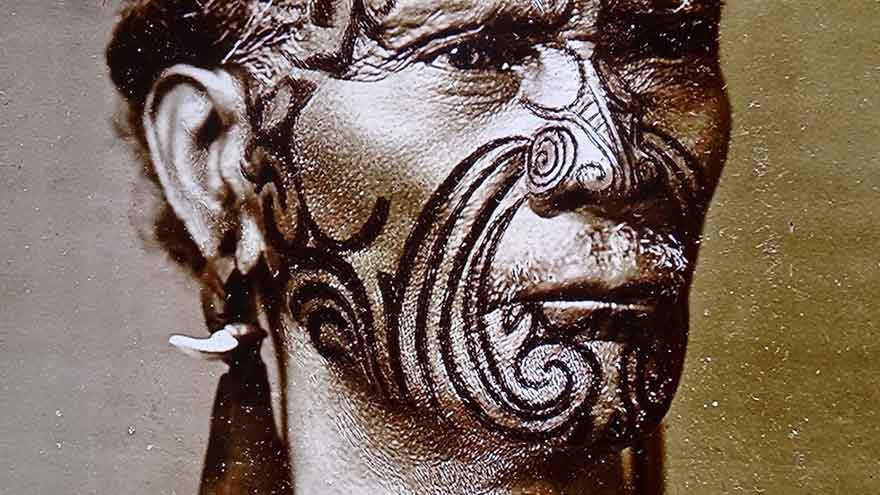Around the world, millions of people from different cultures, backgrounds and social classes decorate their bodies with tattoos. Beyond its aesthetic interest, the history of this form of graphic expression reveals the multiple functions of the tattoo, in turn an instrument of discrimination, distinction and non-conformism. France is in this respect a textbook case that allows us to observe how tattooing has evolved over time.
Drom the 16th century onwards, French explorers set out to meet peoples with very different bodily practices, from the South Pacific to the American continent. The latter are in their eyes "primitive" peoples, outside of "civilization"; their tattoos reinforce this point of view. But the sailors draw inspiration from them and begin to make their own way in the world. tattoo. At the end of the 19th centurye In the 19th century, the practice spread throughout Europe.

As early as 1832, the French authorities began to use tattoos to mark the skin of criminals with an identification code. Before that date, they were marked with a fleur-de-lys using a branding iron.
The tattoo (with a branding iron or needle) visibly marks the submission of outlaws to authority. But it is also a violation of their physical integrity. In the Catholic religion, body marks are condemned because they are seen as a form of paganismas pointed out by Jane Caplan. When the needle penetrates the flesh of the criminal, it symbolically lets out what remains healthy and inviolable in him. The brand punishes the body, while the needle punishes the soul.
Tattoo as rebellion
However, when the criminals started to tattoo each other, they appropriated the practice and changed its meaning. The sulphurous reputation of tattooing, already associated with deviance, was further reinforced with the men in the penal colonies and military prisons, who particularly appreciated it.

In their photo bookJérôme Pierrat and Éric Guillon show how the tattoo became an instrument of rebellion against "respectable people" through the "bad boys" of the underworld at the end of the 19th century.e century.
Some of them, seductive as the devil, have met with great popular success - witness the success of the legionnaire tattooed with the song by Edith Piaf or thefanciful autobiography that "Papillon", former convict, his real name Henri Charriere, published in 1969. The nickname of the protagonist ("butterfly") obviously came from the lepidoptera tattooed on his chest, emblem of hope and freedom for this prisoner who dreamed of escape.
Since then, individuals and communities have continued to use ink and needles as a means of provoking scandal while expressing their artistic sensibilities.
Tattoo and solidarity
Tattoos serve as much to proclaim one's individuality as to show one's belonging to a group. From bikers to military regiments, all kinds of communities use them to strengthen their ties.
But the tattoo also says something about the border between yourself and the rest of the world. Some people even see it as a symbol of the mystery of the inner self carried on the surface of the body, like Juliet FlemingFor whom he is "this intimate demon both expelled and held prisoner within the limits of the subject. »
An interpretation that takes on its full meaning in the light of the "Semi-colon" project (Semicolon Project) in Anglo-Saxon countries, where a tattoo representing this punctuation mark has become the symbol of solidarity with all those suffering from depression and suicidal thoughts.
Critics describe the campaign as a passing fad, popularized by social networks, which would not help those it claims to support; others see it as a form of "social marketing". Catholic proselytizing.
While the Semicolon project has become a viral phenomenon on Twitter, it is not a superficial one. Like the tattooed people of yesteryear, those who are getting involved today are doing it because they feel ostracized - in this case, because of mental illness. They have made a symbol out of that particularity. integration, communication and creativity. The semicolon becomes for them a chosen "brand", a weapon of communication, and a statement of common hope.

As we can see by summoning the past, tattooing is deeply embedded in the pulpit of modern history. Today, it questions our vision of beauty and our sense of belonging. But perhaps it should be seen above all as a tangible and visible effort to resist all these attempts at discipline and control over the body.
Sarah WoodLecturer in Imperial and Postcolonial History, York University
The original text of this article was published on The Conversation.
Header photo : Patrice Corbeil












